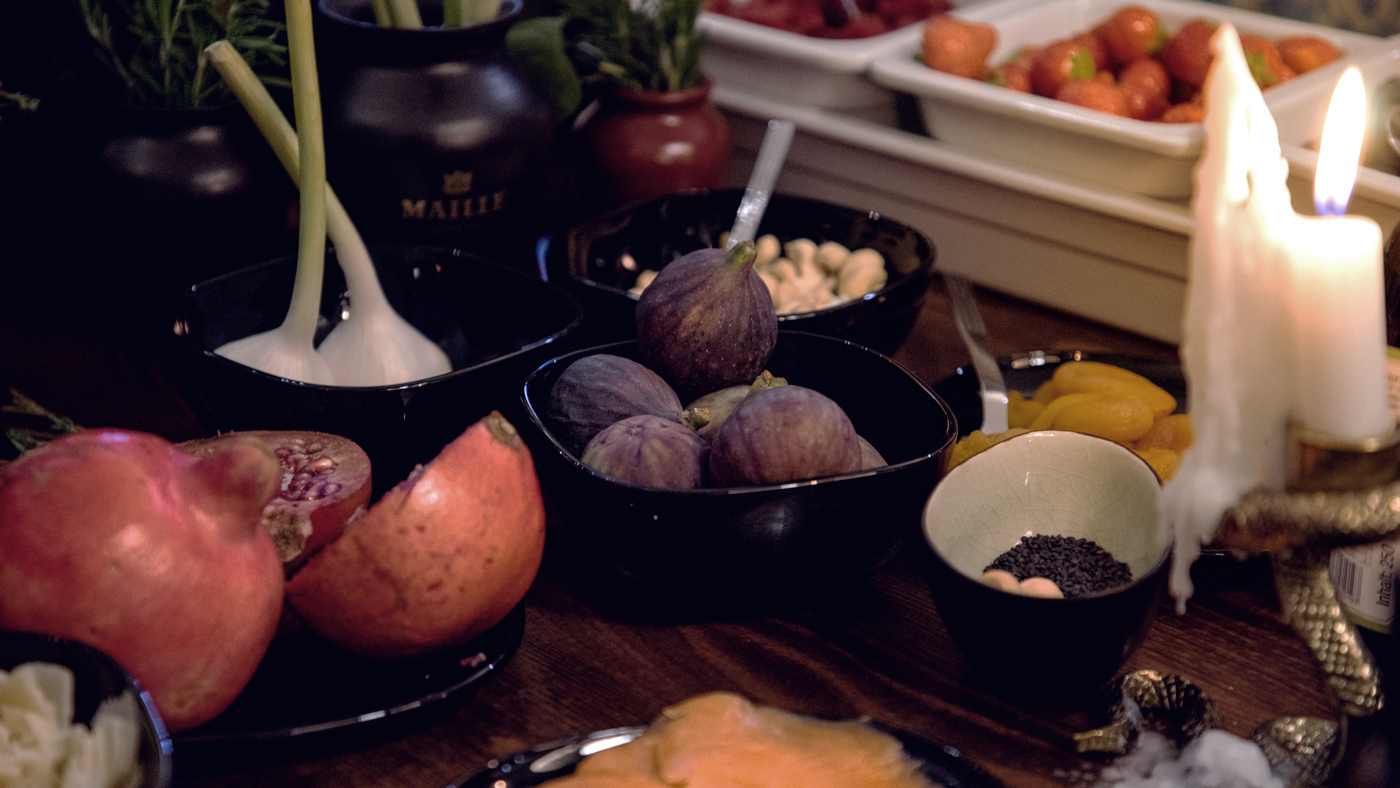Werbung | Vor kurzem hat es uns in die Kaisergalerie nach Hamburg zur L’expérience Bohème zu einem besonderen Workshop verschlagen. Wir waren zu einem Abend geladen, der sich rund um das Thema Senf aus dem Hause MAILLE drehte. An einer langen Tafel gab es neben leckeren Snacks wie Camembert, dem einen oder anderen Glas Champagner, feinem Fleur du Sel von Le Saunier de Camargue vor allem viele Sorten Senf zu entdecken. Die Traditionsmarke MAILLE wurde bereits im Jahr 1747 gegründet. Besonders bekannt ist die Marke durch seinen beliebten Dijonsenf. Der Senfsommelier Harry Lalousis führte auf ganz charmante Weise durch den Abend und berichtete über die Herkunft und Rezepturen von Senf. Ein Dijonsenf beispielsweise muss nicht zwangsläufig aus Dijon selbst kommen, wichtig ist die Dijoner Rezeptur. Dijonsenf wird aus Braunsenfsaat gewonnen und mit Branntweinessig angesetzt. Das Besondere bei der Produktion ist, dass die Körner während des Einmaischens ganz bleiben. Sie werden erst zum Schluss zermahlen, um ihre volle Schärfe zu entfalten. Maille Dijonsenf erfreute sich bereits großer Beliebtheit in den Königs-und Adelshäusern, da er eine gewisse Schärfe aufweist, ohne aber jemanden in Schweißausbrüche zu versetzen, was für die stark geschminkten adligen Herrschaften von großer Bedeutung war, damit sie buchstäblich nicht ihr Gesicht verlieren.
Im Übrigen war früher vor allem Most die Flüssigkeit, mit der die gestoßenen Senfkörner vermengt wurden, aus diesem Grund ist Senf auch unter dem Namen Mostrich, mustard, moutarde bekannt. Beim Workshop à la moutarde wurde nun selbst Hand angelegt. Mit vielen leckeren Zutaten von frischen Kräutern wie Dill, Koriander, Petersilie, Cranberries, Nüssen über diverse Gewürze lassen sich kurzerhand ganz wilde Mostrichtmischungen selbst herstellen. Die Zutaten werden dafür mit dem Senf mit einem Stößel gut vermengt und zerdrückt, sodass ein aromatisierter Spezialsenf entsteht. Die beerig-nussige Mischung passt perfekt als Marinade für Hühnerbrustfielt, aber auch für Fisch. Eine solch selbstgemischter Mostrich ist im Kühlschrank bis zu zwei Wochen haltbar. Viele weitere leckere Tipps und Rezepte findet ihr auch unter der Seite http://www.mustardlovers.de/.
Bereits im Vorfeld hatten wir die Gelegenheit dem Senfsommelier Harry Lalousis einige Fragen über seine ungewöhnliche Tätigkeit und woher die Leidenschaft des gebürtigen Australiers für Senf und Food kommt.
We already know what a wine, whiskey or even a beer sommelier is, but to be honest we never heard before about a mustard sommelier. Harry, could you be so kind, to tell us how you became a mustard sommelier?
Sommelier is an ancient Gaelic word for someone who holds the knowledge, this is how you can have a wine, beer, whisky or even a water or milk Sommelier.
In our first boutique in Paris in 1747 our founder wanted Mustard Sommeliers to explain to people how to use flavored mustards, which were a relatively new concept even back then.
However the job became obsolete and I revived it in 2013, when I started working as a retail expert to open the first international boutique and I realized how much more mustard was and I wanted to share that exciting moment with the world, having been once a chef in our family restaurant, my head was spinning with ideas on what to do with all these flavors of mustard, from a simple pasta with the parmesan and basil mustard all the way to a vanilla Dijon mustard ice cream! I visited Dijon and stayed there for 6 months, with the farmers, the workshops, the consumers and the amazing food culture that Burgundy offers! Maille was born from this food culture, but today Maille leads this culture to new culinary levels and this is exactly what I represent. So to conclude what makes a mustard sommelier? Passion for flavor, good food, centuries upon centuries of knowledge on mustards, vinegars and cornichons and a lot of love as the job could seem demanding without that.
As we seen you’ve been to Canada this year. We’ve visited Vancouver in spring and figured out, that the Canadians are the real foodies. Have you noticed some upcoming new food trends? Are they’re differences in taste comparing to Europe?
I love Vancouver, I was there last year for an amazing food truck festival and to feature mustard on The Marilyn Denis show (my favorite TV presenter), Canadians really are foodies and the reason behind that is good produce available, a sustainable culture, a European background but most importantly Quebec and its French heritage, the restaurant and food scene in Montreal is very impressive.
Canadians as with most of Europe went through a heavy fusion trend that we now see is being replaced by a trend for back to re do the basics, elevating traditional everyday dishes to be truer to flavors.
A mustard is not a mustard. What’s the all-time favorite mustard? Which mustard is your favorite?
“ If you cut any of my fingers, do they not hurt the same?”Does a parent not love all their children equally? Yes and Yes, however! Dijon as a first born is my pride and joy, you can transform it into anything.
What was the craziest food creation you ate with mustard? By the way, did you like mustard already as child?
My craziest creation would have to be Chouquette filled with Nutella and honey mustard, its such a great combination. I actually did love mustard from a child as a flavor and my father who travelled a lot for food used to bring jars of French mustard back home from Europe. When I told my mother what my new job was to be and on what brand she pointed out that this was Dads favorite mustard he used to bring home, I realized then that this was my fate.
Dieser Beitrag ist in Kooperation mit MAILLE entstanden.
Bilder: Maille | Text: Maria-Silva Villbrandt







